About
A CONCISE HISTORY OF AACA IN THE BEGINNING
“I started as a child” quoted famed automotive enthusiast Dennis Gage a few years ago, when describing how his life as a certified “car nut” began.
We all had a beginning, and if you asked each of the worlds old car lovers (millions of them) how they started, the answers would be similar in many ways. There is something about old cars that captures us and holds us firmly in their grip throughout life. Our enthusiasm ebbs and flows and is dependent on spare time, spare cash, work, other interests, and other distractions. Throughout all of it, clubs exist for us to join so we can share our common interests with others. They were all created from the same seeds – people sharing a common love affair with the automobile (and other forms of vintage transport).


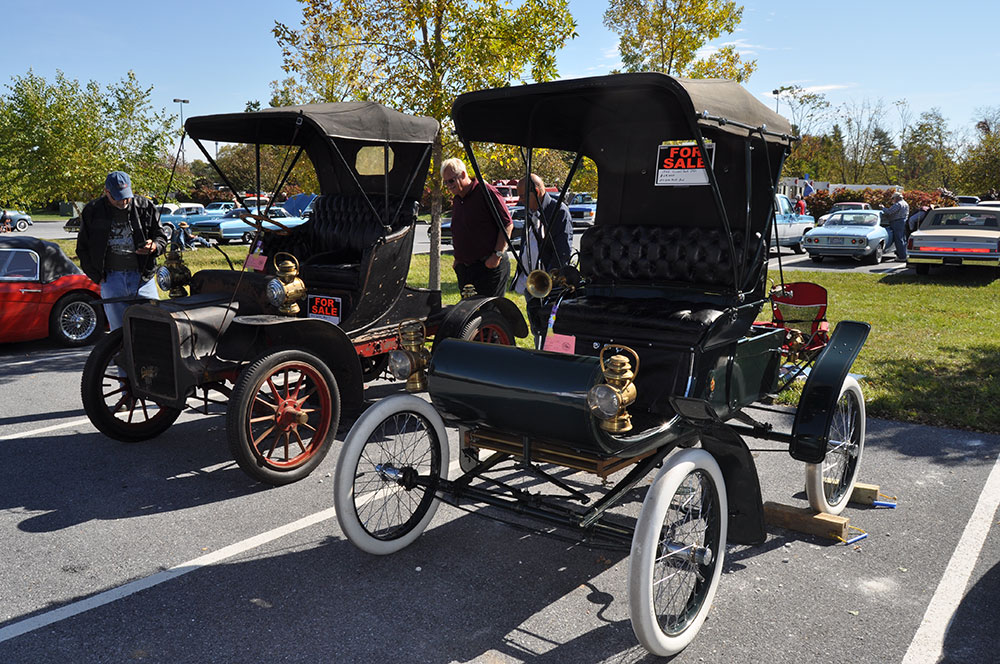
As you read through our beginning, you’ll see yours, and that of your own region or chapter reflected in this history. It’s about people, sharing their common love affair with old cars.
At some point in time, long before collecting cars was considered a ”hobby” and long before there were clubs, there were a few individuals, fascinated with things mechanical (and elderly) who saw the challenge of resurrecting long neglected pieces of our motoring heritage. A few individuals even began amassing hoards of cars, in an apparent attempt to save some of the many “orphans” representing car companies’ no longer in business.
As early as 1931, as the Philadelphia Automobile Trade Association readied itself for the unveiling of the new models at the annual Philadelphia Automobile Show, it was decided to invite early cars to drive under their own power to the exposition. The owners of several old cars were located and persuaded to crank them up and drive to what the trade association billed as the First Antique Automobile Derby. This event was successful enough to warrant repeating in subsequent years. With each year’s derby, the number of cars participating increased. Under the guidance of Fred Nicholson who had been associated with very early automobile contests in the United States and abroad, the annual derbies became reliability runs. Today, we commemorate those early efforts with our own version of the “Reliability Tour.” To participate, a car had to be 25 years or older. Participants were required to drive from any point 25 miles from Philadelphia. At the time of starting, a telegram had to be sent announcing the starting time. Time checks and traffic tests were the basis for derby prices. In addition, there were manufacturers’ trophies, prizes for showing cars, and other awards in the form of cash – no small incentive during the years of the Great Depression.
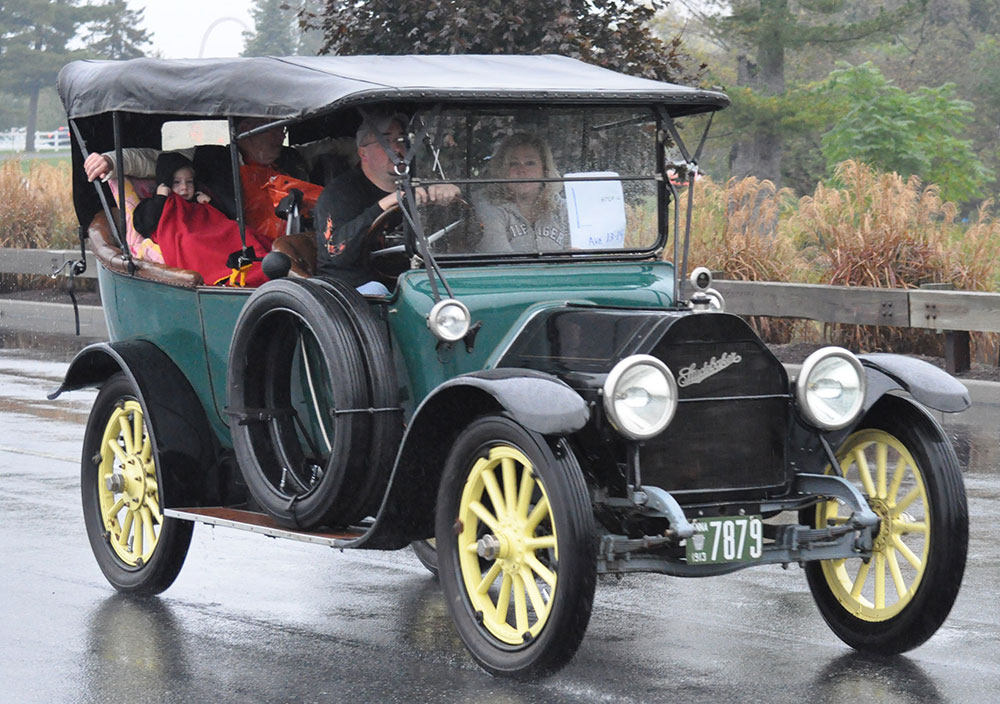

In January 1935, on a bitter cold day, the nearly frozen car owners sat before Convention Hall, talked about old cars, and shared some complaints about the derby organizers’ inattention to their request for additional prize money, and the general lack of recognition given to the participants. Two new participants, Ted Fiala and Frank Abramson, sat in a turn of the century car that they had discovered the previous year in a barn near what is now Philadelphia’s International Airport. The 1907 Waltham-Orient had not run in 25 years, and they accepted the challenge of getting it running again. In a short time, they had its single cylinder banging away and did what passed for a “restoration” in those days. Hearing about the Antique Derby, they hastened to get in what they thought would be pure fun, as well as a chance to meet and talk with others enthused about old cars.
On September 20, 1935, having obtained names and addresses of previous event participants, Fiala, and Abramson fired off a letter to each derby contestant asking if they would be interested in forming a club to promote the hobby of antique car collecting and to achieve greater derby recognition. Accompanying the letter were reply cards, and most were returned in agreement.
A second letter was sent October 28, 1935, requesting everyone to attend a meeting to be held at the Automobile Club of Philadelphia. The new 1936 automobiles were due to be introduced in Philadelphia with the running of the Fifth Annual Antique Automobile Derby on November 11, and this time the car owners were going to become organized. The agenda for the meeting was as follows: “organization of the club and discussion of the forthcoming derby on November 11, 1935, including the question of better and more certain prize money.”
The original 14 founding members and their cars were
- Frank Abramson, Philadelphia, PA – 1907 Waltham-Orient
- Theodore B. Brooks, Wayne, PA – 1913 Buick
- John S. Eichorn, Philadelphia, PA – 1914 Ford
- Earl S. Eckel, Washington, NJ – 1912 Stanley
- Theodore J. Fiala, Havertown, PA – 1907 Waltham-Orient
- Joseph M. Kern, Media, PA – 1909 Pierce-Arrow
- Clarence W. Letts, Glenside, PA – 1902 Oldsmobile
- Paul Marvel, Lancaster, PA – 1909 Jackson
- Walter Matter, Hawley, PA – 1910 Ford
- Fred Parsons, Bryn Mawr, PA – 1901 Winton
- Anton Schuck, Stockton, NJ – 1905 Autocar
- D Spagnolia, Philadelphia, PA – 1915 Buick
- Noah Swatley, Soudertown, PA – 1912 Overland
- Joseph C. Williams, Franklinville, NJ – 1902 Oldsmobile
The Club’s first President, Mr. Frank Abramson, served the first three years. At a March 16, 1936 meeting, a constitution was drawn up and submitted to the membership for approval. Mr. George M. Hughes was elected President in the fall of 1938 and did much to keep our small club and magazine going. In those early years, we struggled to communicate and provide opportunities for car lovers to get together.
It was also in 1938 that club member George Green and his wife called attention to the club by making an 8834 mile cross country trip from their home in Lambertville, N.J. to California, touching on Canada and Mexico. The over three month journey in their 1904 Oldsmobile was made with virtually no problems. America’s love affair with antique cars was growing.
Volume 1, Number 1 of our magazine was first published in 1937 and called “The Bulletin of the Antique Automobile” with the first elected editor being Theodore Fiala. Who can deny that today, our magazine is the finest of its kind existing.
What about that AACA Logo that today, younger members sometimes see as a “buggy? Of course the first automobiles were derived from the buggy, and those early vehicles made a significant impact on our club. That was particularly the case with the Duryea – widely recognized as one of the first production automobiles built in this country. Indeed, the Duryea family played a large role in the development of our club, serving in many capacities. Thus, the Duryea automobile was chosen as our emblem with the first published drawing of the club emblem, as we know it today, designed in 1939 by Mr. Herbert van Haagen of Upper Darby, Pa.

Just five years later, the AACA had grown from this group of 14 enthusiasts to 115 dispersed among 15 states and two foreign countries.
A new tradition began on March 1, 1941, when a club banquet was held “to stimulate interest among our members and help get them into the proper frame of mind for the coming spring activities.” This first annual banquet took place at Bookbinder’s Restaurant in Philadelphia “to do honor to the memory of the pioneers whose efforts made possible the automobile as it is today.” There were 78 members attending and speakers were famed opera singer and early car collector James Melton and famous race driver Ralph De Palma. Another tradition took hold as well – life membership. Thomas McKean of Chepachet, Rhode Island, became the first active life member of the AACA, entitling him to all rights and privileges of the organization for life. (McKean, who passed away in 1949, would serve during his life-time as club treasurer, Antique Automobile editor, and a member and director of the Executive Committee.)
The war years were a difficult time for the old car hobby, and AACA. In the months and years to come, the future of the hobby itself required the same steadfastness as the war effort itself. “our mutual enthusiasm in the Antique Automobile Club of America approaches the spring of 1942 under conditions which are disturbing and fraught with uncertainties,” wrote AACA President Hyde W. Ballard. “Our customary plans for acquiring and reconditioning old cars have not materialized; instead we are directly or indirectly bending effort toward victory for the United Nations.”
These efforts included involvement in materials acquisition, not the least of which was rubber drives. As it pertained to the hobby, looking beyond the unforeseen postwar years, rubber-shortage questions arose as they pertained to tire availability. There was also hope that scrap metal drives would result in the unearthing of old cars once thought lost to time., although it was feared that some museum pieces may not be spared. Along with gasoline rationing, it was mandated that old vehicles be chopped up for the scrap campaign. Enthusiasts rose up however, and an appeal to exempt antique motor vehicles from the scrap drives reached the War Production Board’s Conservation Division, which issued the following statement: “An old vehicle, other than a carefully preserved antique, maybe considered junk, it is incapable of giving useful transportation service and cannot be put in running order in sixty days.” This time in the history of the automobile hobby saw the beginnings of several vast “hoards” of early cars, including the legendary Barney Pollard collection outside of Detroit. Barney had accumulated many early and rare vehicles for years and to store them, would suspend them on end from cables strung between poles, enclosing them with tin and wood siding. Protected from view, they survived the war’s scrap drives.
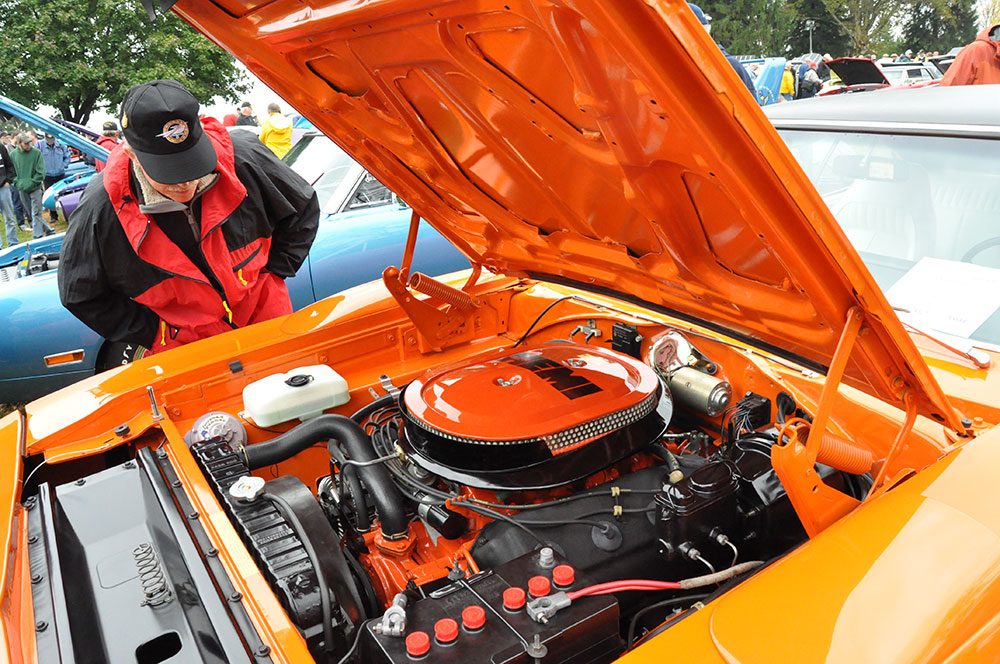

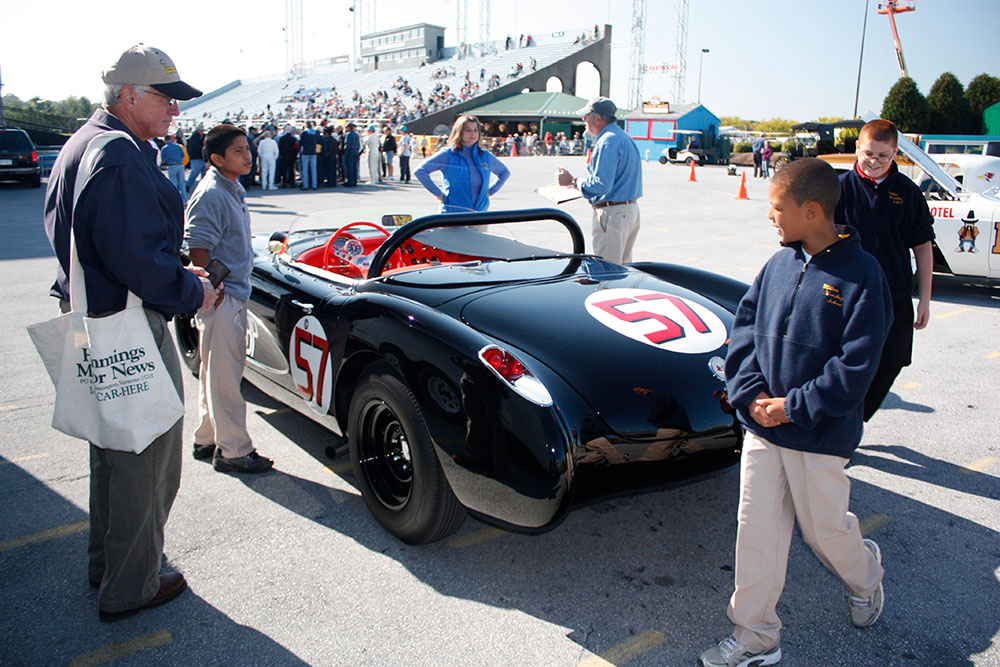
During the years prior to 1942 the Club held an Annual Outing rotating among the homes of various members. On October 18, 1942 the Annual Outing was moved to the Lamb Tavern in Springfield, Pa., with eighteen cars participating in spite of gasoline rationing! It was already a tradition.
Beginning with the January, 1943 issue of our club magazine, it was renamed ANTIQUE AUTOMOBILE. Through 1944, there had been a number of editors while club membership climbed to 400. One of the leading personalities of our Club during this period was Mr. M.J. Duryea, the son of Charles E. Duryea. During the years following, he became Editor of ANTIQUE AUTOMOBILE, and, as such, his influence was felt far and wide. As the Club grew, the Spring Meet continued to be held in different locales and farther afield. In 1944 there was an important change in our activity schedule – there was an Annual Spring Outing at the Lamb Tavern, with an Annual Fall Outing at the Oak Terrace Country Club, in Ambler, Pa. on October 7, 1944. With two events to choose from, participation began to swell.
On December 15, 1944 a general meeting of the club was held at the Robert Morris Hotel in Philadelphia, where a new Code of By-Laws was discussed. Though not finalized at this meeting, the resulting By-Laws would establish, among other things, the board of directors concept by which AACA would be governed in the future.
The immediate postwar years were met with an air of change, if not renewal. In 1945 at the July 1 meeting of the Executive Committee of the AACA, the official club colors were selected: Packard blue and brass. Packard blue was selected because it had for “many years been a particular shade of great popularity on Packard cars.” And brass was chosen for its conspicuousness on early cars with brass trim.
With membership standing at 540, the July meeting also produced a provision that effectively established regional chapters of the club. It was recognized that members living far from Philadelphia needed an opportunity to form local groups under AACA sponsorship, groups that could have their own outings and other activities. The stage was set for exponential growth. The Illinois Region became the first region in 945, soon followed by the Cleveland Ohio region.
The Fall Meet was moved to the Devon Horse Show Grounds in 1946 and this became the site of the Annual Fall Meet.


Also in 1946, an invitation to the Golden Jubilee of the automobile industry in Detroit came to AACA and it was decided to drive there with antique cars in a tour group. The name “Glidden Tour” was proposed in honor of the historic tours organized by Charles Glidden in the early years of the automobile, and this became the first of the Revival Glidden Tours. It was this event that prompted Firestone to make up new tires for these historic vehicles. One of the Detroit highlights came when George Green received a gold-colored Hudson for the performance of his venerable Cross Country 1904 Oldsmobile. This first Tour proved so popular that with tires at last available, the Glidden Tour once again became a national institution. As these Tours entered new areas, greater interest in antique cars spread and grew, as did AACA itself.
Our antique cars were, at first, not much to look at, for the criterion was, “Will they run?” As competitive meets became well established the incentive for restoring the cars beyond running condition emerged. Mr. Fred C. Nicholson was the first Chief Judge for the Club. By 1947 the Club had devised a classification of categories for competition, divided into four categories, and 11 classes. In 1949, Fred Nicholson retired and Mr. Donald A. Gallager became the new Chief Judge. Two more categories were introduced, these being for Model T Ford and High Wheeler cars.
By 1950, membership rolls exceeded 2,500. The AACA Annual Fall Meet was held at the Devon Horse Park on Saturday, October 14, under sunny skies; the event drew a record number of entries and plentiful spectators. The following year, newspaper accounts gave an estimated attendance of 5,000 and roughly150 automobiles were registered for show competition. The fall event had become a success by all measures.
As early as 1951, the increasing numbers of competing cars necessitated developing a more comprehensive classification system. A committee was formed, which came up with the Junior/Senior system, used first at the Oct. 13, 1951 Devon Show. In time for the 1952 show season, a new eighteen category classification system was put into place that remains the basis for our present evolving vehicle classification system today. The new 1952 classifications included Classic cars, “less than 25 years old and pre-1940”.
In 1953, the 200 participating cars literally overflowed the Devon Horse Show grounds.
According to Jim Grundy, Jr. his grandfather, Samuel E. Bailey was one of the early organizers of the original gathering, which took place at Devon until an unusual episode separated the horseless carriages from the horse-drawn carriages that had prime claim to the park (It was, after all, a horse show.) Witnesses recount how a steam car’s whistle spooked some horses with its shrill loud shriek. The incident thereby led to the demanded relocation of the then-small event.
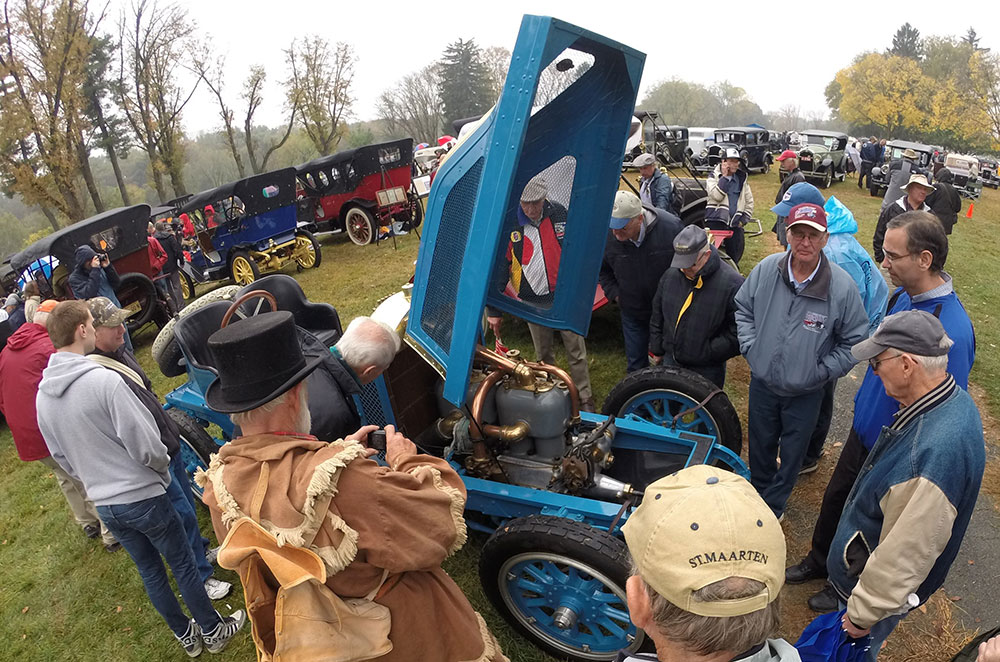

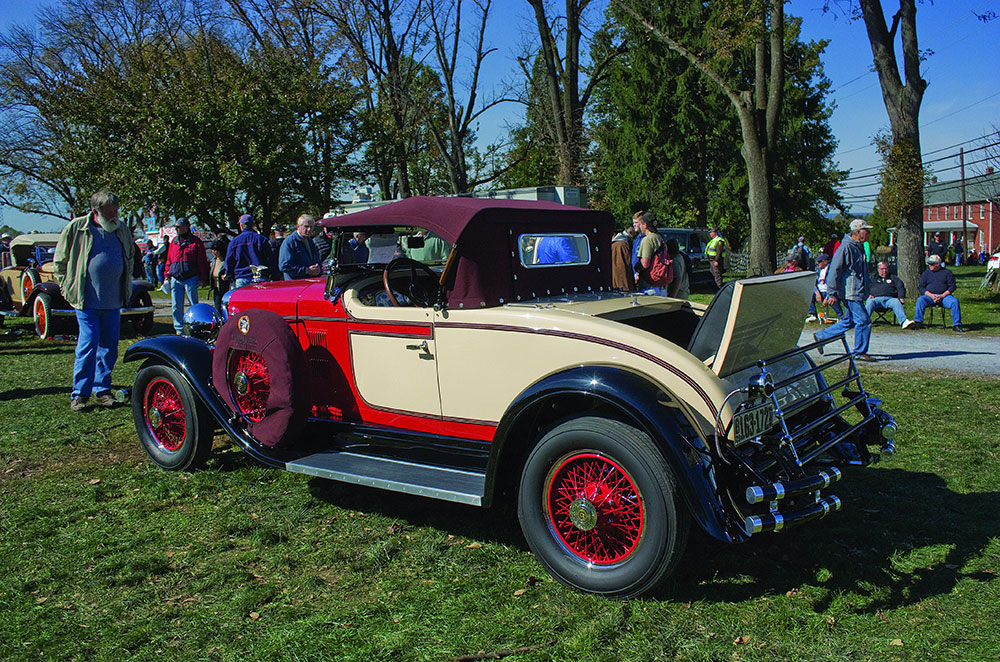
And so it was that the AACA Fall Meet was afterward held in Hershey, Pennsylvania.
At the Saturday October 16, 1954 meet, the entries exceeded 300 cars. As if a harbinger of years to come, Hurricane Hazel had passed through Pennsylvania on Friday leaving mud aplenty in its wake. But, newly elected President Leslie R. Henry’s comments reflected the club’s energetic, positive attitude. “I suggest we neither take our antique automobiles to lightly, nor ourselves too seriously. He who tries to walk the proverbial chalk line, magnifying class in one hand and book of rules in the other, may make no mistakes but he may make no friends either for, finding no joy himself, he brings none to others.”
The demonstrated flexibility of the classification system, tuned to the times, has been essential to achieving this growth. In 1953 early Model A Ford cars were included in a new Class 18, “Antique Cars w/four-wheel brakes.” No major changes occurred until February, 1957, when a new automotive definition and class was introduced, “Class 20 – Production Cars, 1930 to 25 years of age. In 1959 the 1928-1931 Model A’s were pulled from Classes 18 and 20, and placed into their own class. In 1960, Production car and truck classes were frozen, with a 1935 cutoff date. A 1948 cutoff date was established for Classic cars. These rules remained basically unchanged until 1968, when a new rule was introduced, which allowed expansion by one year every other year. Then, the July-August, 1974 issue of ANTIQUE AUTOMOBILE announced the inclusion of vehicles 25 years old and older into the classifications, effective February 1, 1975. This rule continues in effect today. During ensuing years, separate classes were implemented to separate Ford V-8 cars, Chevrolet Corvettes, Ford Thunderbirds, Ford Mustangs, 1955-57 Chevrolets, and others. New categories were developed for “specifically named Prestige cars” and “Limited Production and Prototype vehicles”. In 1988 the Historical Preservation of Original Features (HPOF) class was implemented, and has proven to be very popular. Today, Drivers Participation vehicles dot the showfield, providing ample opportunity for car lovers to be a big part of AACA.
We’ve grown with the times and while we still love to polish brass, there is room for every automotive interest in AACA.

Do you remember that those earliest events required participants to drive their cars from points at least 25 miles outside of Philadelphia? Well, AACA has always encouraged the use of our vehicles. Of course today’s traffic and freeways don’t always permit the use of single cylinder Cadillacs or Curved Dash Oldsmobiles, but there are nationally sponsored tours available throughout the year that provide the right kind of venue to those cars. AACA hosts tours including the Reliability, Vintage, Founders, and Sentimental as well as sharing the Revival Glidden Tour in alternating years with the Veteran Motorcar Club of America. The opportunity to tour with similar vehicles is a thrilling experience as members traverse the nations back roads and long forgotten byways. It’s early motoring at its best through AACA and provides participants with the chance to go places and see things they wouldn’t otherwise be able to.
In the early years, the Club’s financial business was handled by the Provident Tradesmen’s Bank of Philadelphia. In 1959, at the invitation of the Hershey Estates, the financial operation of all Club business was moved to office space in the building occupied by the Hershey Museum. Mr. William E. Bomgardner became the first Business Manager, later Executive Director and Editor of the magazine. During this period, AACA purchased a building in Hershey, which is now National Headquarters. In 1986 Mr.Bomgardner retired and was succeeded by Mr. William H. Smith. Upon his retirement in 2003, Steve Moskowitz became AACA’s third Executive Director.
During the 1960’s, Divisions were created to achieve placement of National Spring and Fall meets in all parts of the country. A cadre of volunteer National Judges was formed, and National Judging Schools began. An annual Grand National Meet was established at which only Senior vehicles would compete, and held for the first time in 1980, on the grounds of the International Salt Co. in Clarks Summit, Pa. In 1988, a Trade Show was added to the agenda of the Annual Meeting, and the Premier Founders Tour (1936 and later) was held in Huntsville, Alabama. In 1991 Roundtable Discussions at various National Meets and Tours were started, and in 1992 National Meet Seminars were first held in conjunction with a National Meet. In 1994 a new AACA Vintage Tour (1927 and earlier) was approved to augment the Reliability Tour (1914 and earlier) on odd years, beginning in 1997. Divisional Tours, shorter in duration than the previously established Tours, have been initiated, with the first being held in Manassas, Virginia during 1995.
Growing with the hobby has become a tradition with AACA as times have changed. From 850 members in 1948; 1,400 in 1949; 5,000 in 1954; 8,700 in 1959; 23,000 in 1969; 37,000 in 1976; to over 50,000 in AACA’s Golden Jubilee year, 1985, growth has remained steady. Much of this growth can be credited to the outstanding dedication and achievement of the officers and directors, as well as the efforts and activities of the Regions and Chapters. Beginning with founding of the Illinois Region, the number of Regions and Chapters has grown to more than 400 today. Innovative approaches to enhance enjoyment by its members, has helped AACA achieve the enviable position of being the largest club in the world dedicated to furthering interest in, and preservation of, antique automobiles and their history.
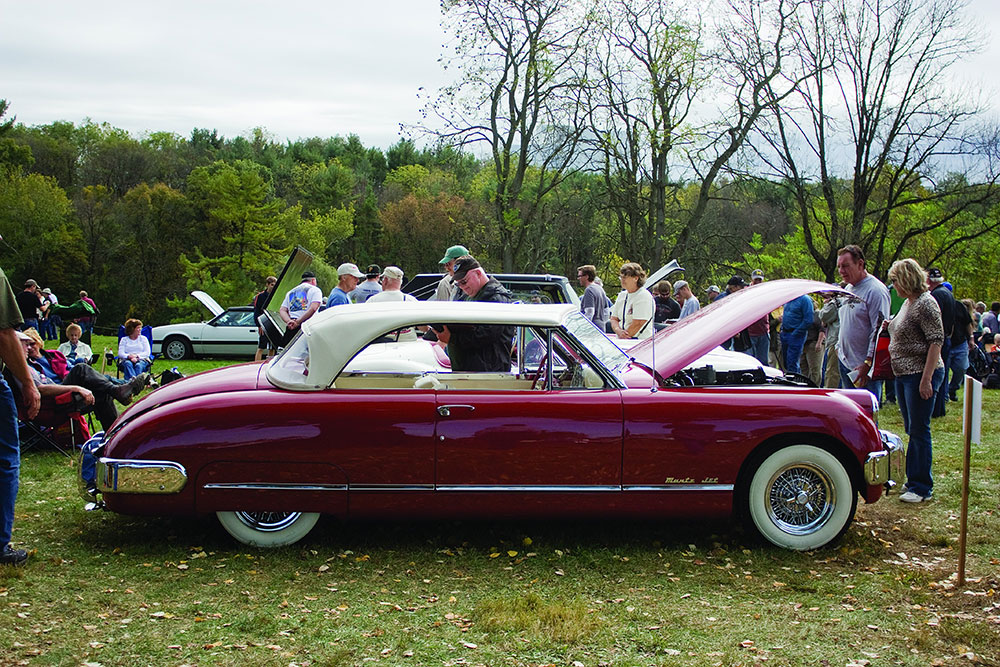
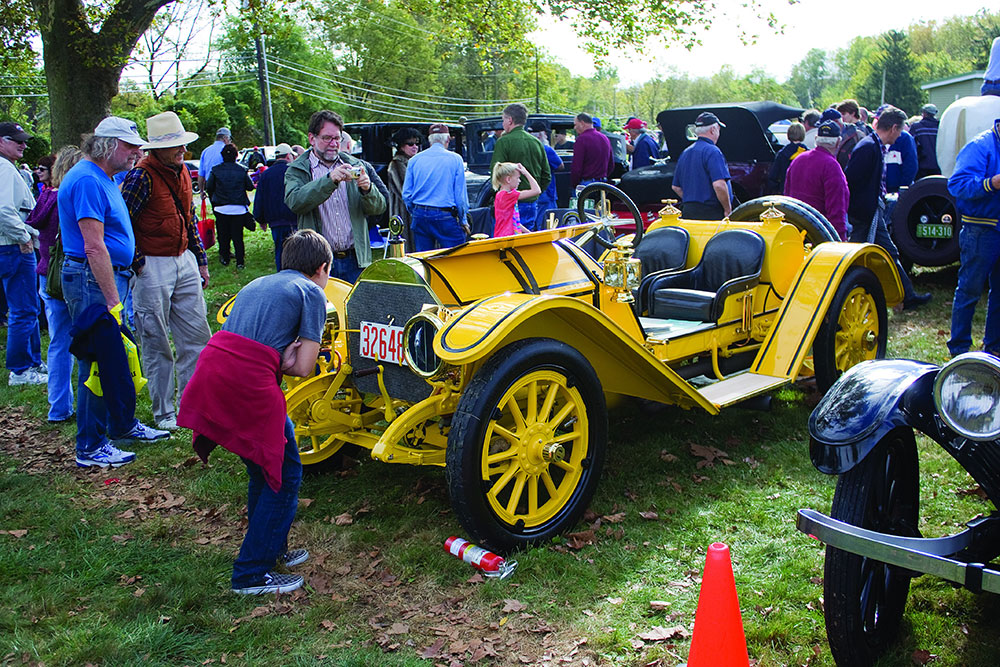
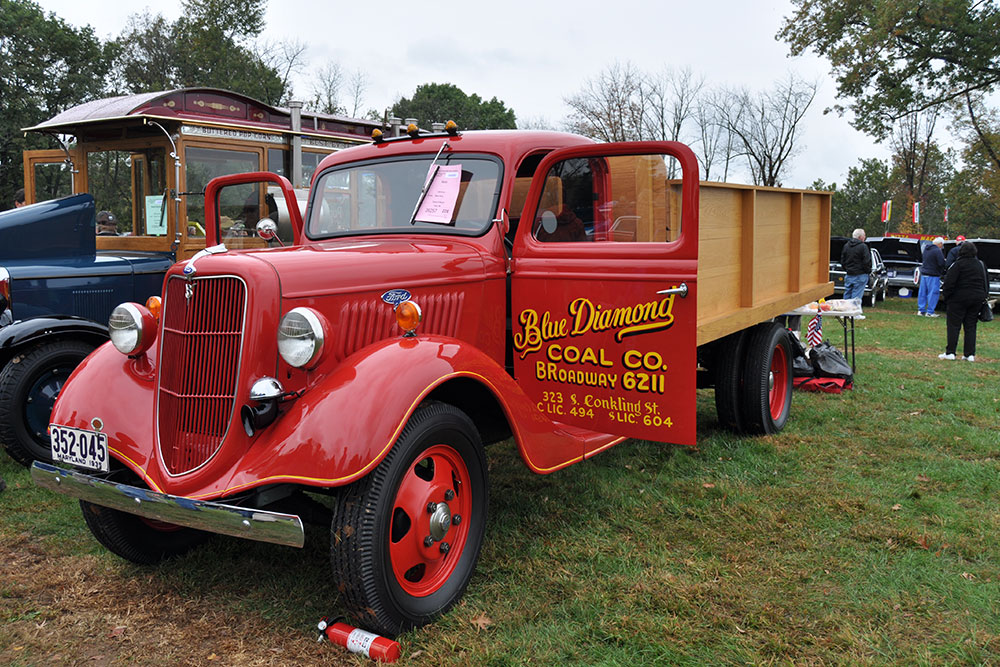
Naturally, the club has accumulated a lot of “things” over the years. The largest piles consisted of automotive literature. There were back issues of car magazines, sales catalogs, owner’s manuals, even blue prints. What started as a few over-stuffed file cabinets on the sagging floor of the loft area at our headquarters in Hershey has today become the finest automotive reference library existing. Now, professionally archived, properly catalogued and cared for as it should be, the AACA Library and Research Center has become an integral part of AACA and the hobby itself. Through the generous contributions of our members our Library has been responsible for documenting many significantly important restorations. We’re preserving history in new and exciting ways as our members continue to donate rare and important automotive literature. Over the years a lot of members have given generously of their time and financial resources to make the Library the success it has been for AACA and the hobby itself.
AACA’s history continues to be written by new members with wonderful ideas. Their hard work and generosity will ensure that our future is sound. In 2010 we celebrated our 75th anniversary, and paused for a moment to think about our heritage and how it all began.
And in the beginning – it was all started with a small group of people getting together to share their love affair with early automobiles. It’s been our focus for over seventy-five years now. Although the size of the organization dictates we pay closer attention to the business of our hobby, it still remains a hobby and the focus remains fun. As we look to the future, we also look to the past and honor those who laid the foundation for our success. And we look to the future and eagerly await the next chapters in the life of AACA.
